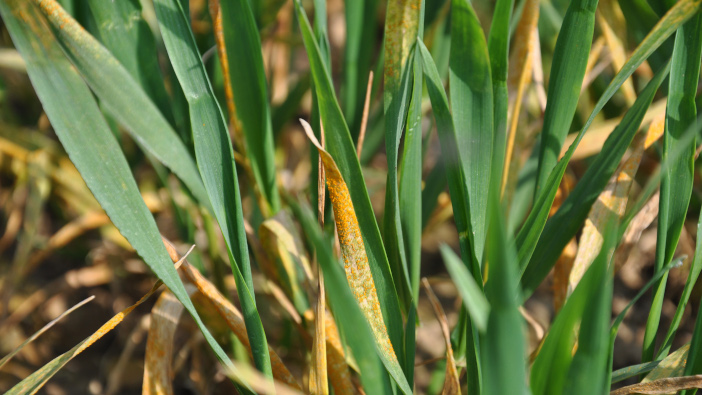Growers should be alert to yellow rust risks in backwards or later-drilled winter wheat crops, according to Syngenta.
David King, head of technical for the UK, Ireland and the Nordics, says that while levels were relatively low coming out of winter, it is a disease that likes juvenile leaves and can strike quickly.
“It’s very much a case of being vigilant rather than panicking,” he says. “However, in parts of the country, a lot of wheat wasn’t planted until November, and some earlier-drilled wheat struggled where it was planted in poorer seedbeds. Both of these scenarios render crops more vulnerable to yellow rust.”
Growers are urged to carry out a risk assessment as part of their T1 fungicide decisions, including factors such as drilling date and crop development, alongside variety susceptibility.
“In the right weather conditions, yellow rust can go through its life cycle in just 10-12 days, compared with 14-28 days for Septoria tritici, and can cause yield losses of up to 50%. Which is why it’s so important to halt it early.
“Where there are concerns about yellow rust, check the AHDB fungicide dose response curves to get a picture of the efficacy of different fungicides against the disease. Over multiple years, the SDHI fungicide Solatenol, which is contained in Elatus Era, has given excellent yellow rust control and excellent yields in yellow rust situations.
“For high yellow rust risk scenarios, such as late-drilled susceptible varieties, Elatus Era is a cost-effective option applied at T1 at doses between 0.8 and 1l/ha.
“In mixed Septoria and yellow rust risk situations, growers should consider still utilising the powerful yellow rust activity of Elatus Era by applying it at 0.4-0.5l/ha as a top-up to fungicides targeted at Septoria tritici, such as fluxapyroxad + mefentrifluconazole or fenpicoxamid + prothioconazole. This offers high level yellow rust control and adds additional Septoria and eyespot activity.”
A further scenario to keep in mind, he concludes, is if levels of the disease appear to be low in April. This can lead to growers adding insufficient activity into T1 applications, only for the disease to escalate suddenly.
“Remember, the flag leaf contributes more than 40% to winter wheat yield,” he says. “So preventing yellow rust early, before it reaches the flag leaf, is key. Trial work has shown T1 as being the optimum timing for controlling yellow rust.”


